Cycle News Staff | May 11, 2018
Trials Sampler
2018 GasGas Trial TXT School 125, TXT Contact ES 250 and TXT GP 300
GasGas has you covered when it comes the right trials bike for you.
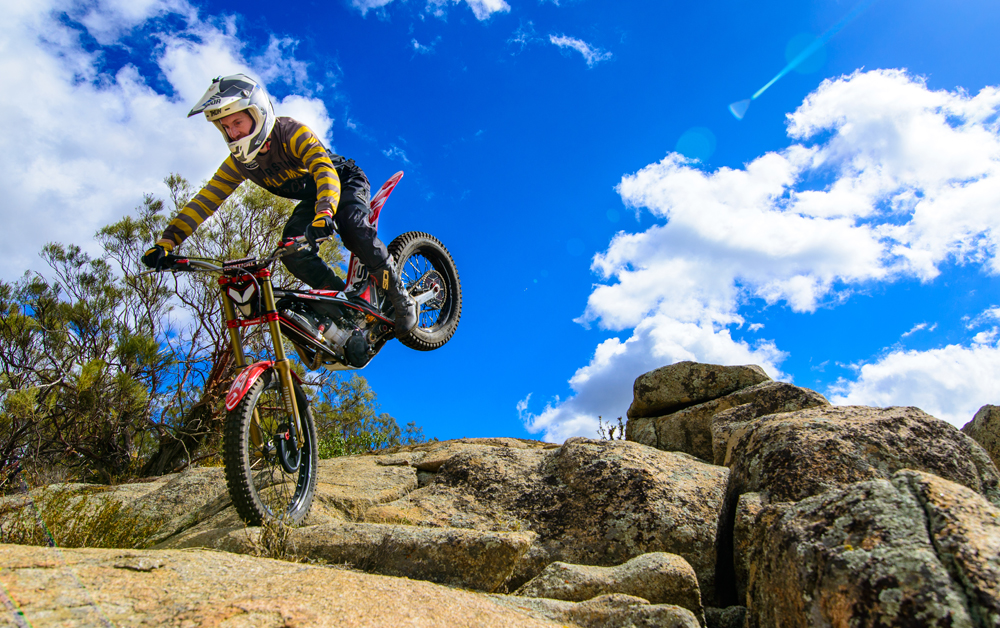 It doesn’t get much better than this—GasGas’ state-of-the-art TXT GP 300.
It doesn’t get much better than this—GasGas’ state-of-the-art TXT GP 300.
The name GasGas is synonymous with trials. Even though the Spanish company has only been in existence since 1985, it has risen quickly through the ranks and is now—and has been for a while—one of the leading manufacturers of trials motorcycles, and it also produces top-of-line off-road motorcycles. GasGas recently went through some turbulent times but has since recovered and has been sailing smoothly ever since being taken in by its new parent company, Grupo Torrot Electric.
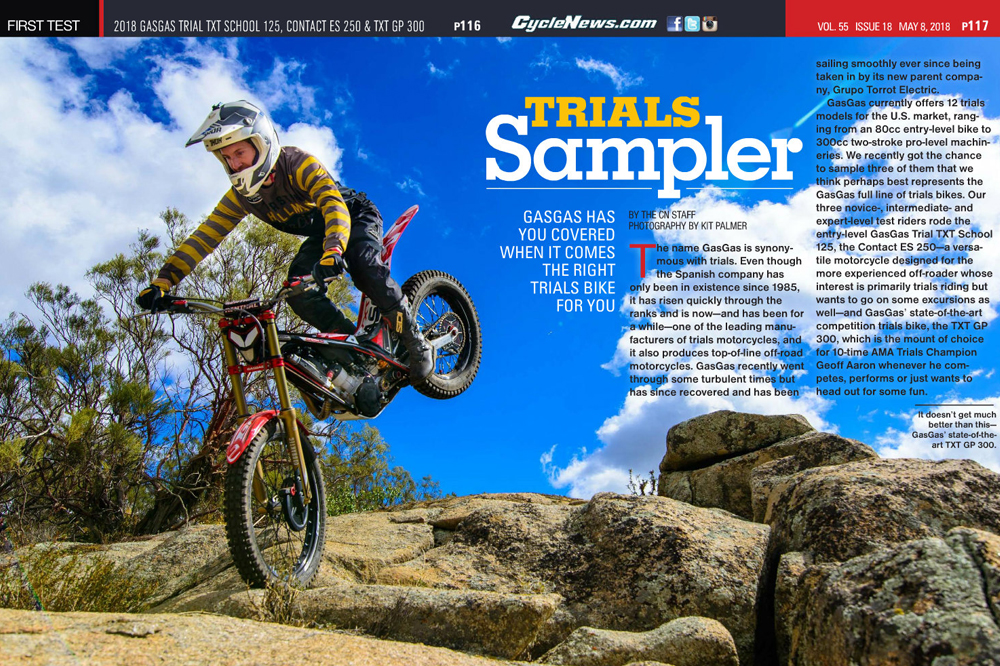
Click here to read this in the Cycle News Digital Edition Magazine.
PHOTOGRAPHY BY KIT PALMER
GasGas currently offers 12 trials models for the U.S. market, ranging from an 80cc entry-level bike to 300cc two-stroke pro-level machineries. We recently got the chance to sample three of them that we think perhaps best represents the GasGas full line of trials bikes. Our three novice-, intermediate- and expert-level test riders rode the entry-level GasGas Trial TXT School 125, the Contact ES 250—a versatile motorcycle designed for the more experienced off-roader whose interest is primarily trials riding but wants to go on some excursions as well—and GasGas’ state-of-the-art competition trials bike, the TXT GP 300, which is the mount of choice for 10-time AMA Trials Champion Geoff Aaron whenever he competes, performs or just wants to head out for some fun.
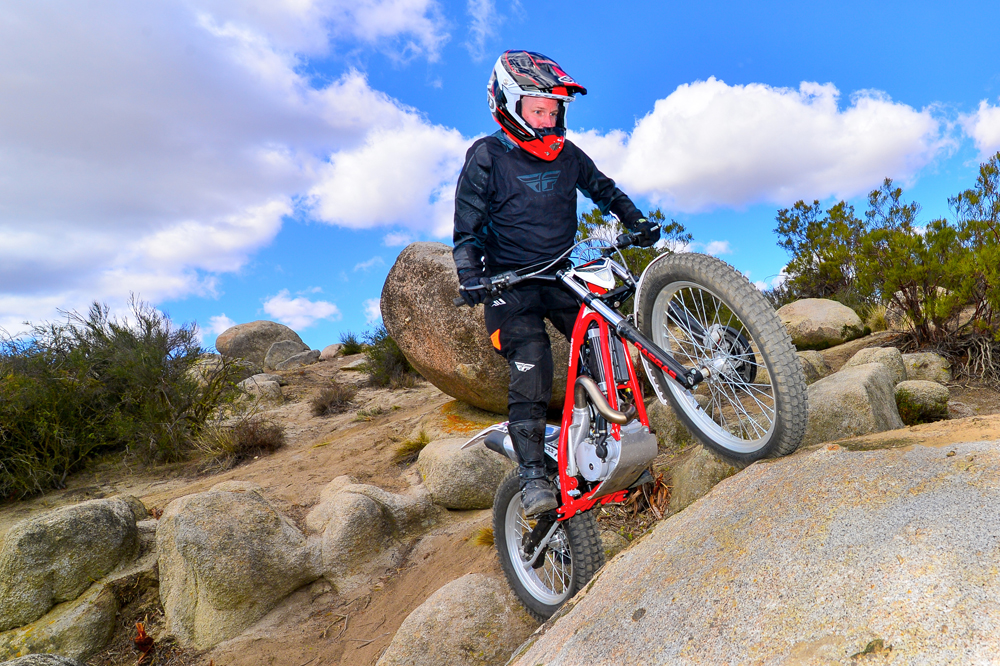 The TXT 125 School has amazing performance for an entry-level trials bike.
The TXT 125 School has amazing performance for an entry-level trials bike.
GasGas Trial TXT School 125 ($5999)
You can rightfully assume by its name that the GasGas Trial TXT School 125 is intended for the beginner, as well as “…veteran riders who are looking for an affordable bike that is going to give them the maximum amount of fun on an enjoyable day of trial riding,” according to GasGas literature. GasGas also offers an even smaller beginners model, the TXT 80. The TXT School 125 is powered by a 124.8cc, liquid-cooled, two-stroke engine with a six-speed gearbox. It has Spanish-made Olle suspension components and weighs just 153 pounds.
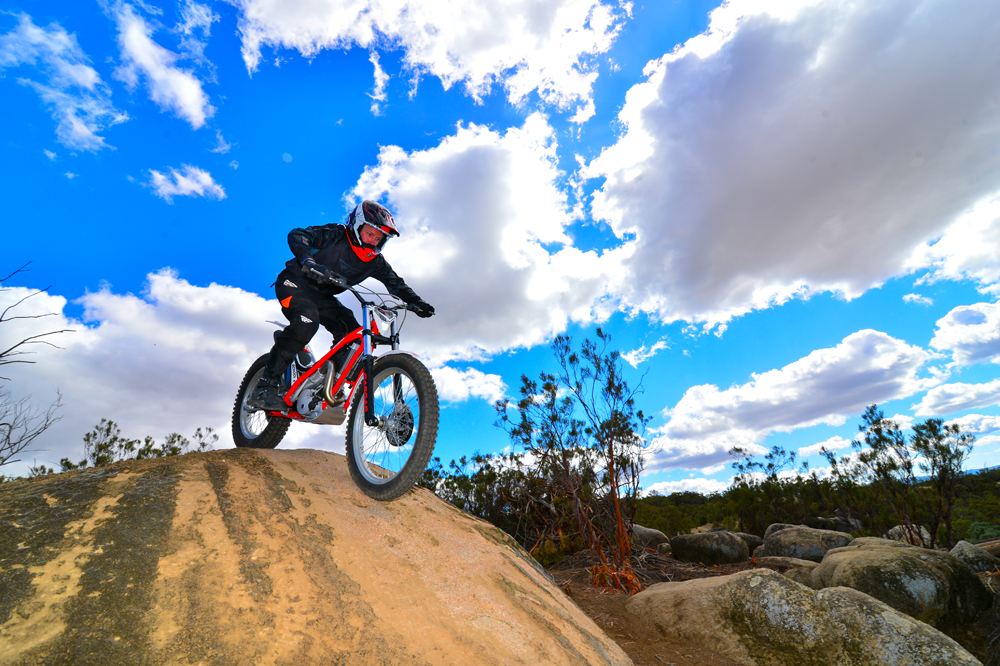
The TXT School 125 performs incredibly well for its price tag. Of course, as an economy model, it’s going to give up some of the luxuries of GasGas’ premier line of bikes, but the decrease in performance is not as noticeable as you might expect.
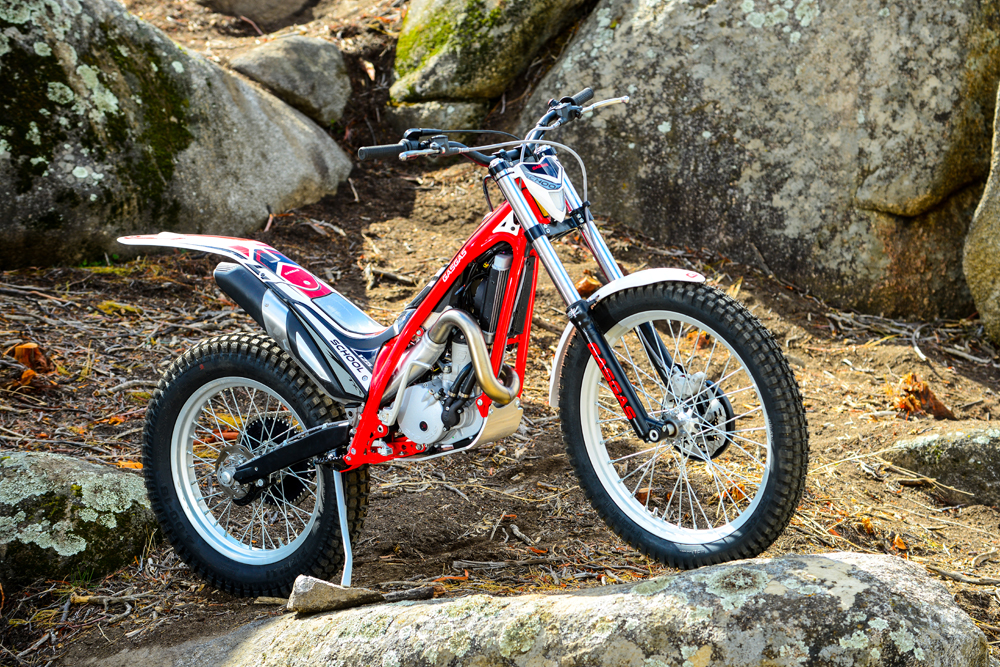 Hardly looks like a beginner bike, does it? Seasoned riders will have tons of fun on the 125 School.
Hardly looks like a beginner bike, does it? Seasoned riders will have tons of fun on the 125 School.
The chassis is very lightweight and well balanced, which allows the bike to handle incredibly well, specifically in tight, technical situations.
Most of the economy components of the bike showed minimal performance disadvantages—however, the suspension was the most noticeable. That said, a beginner or even a novice rider will not likely feel much of a difference, but as we started to push the bike with bigger hits and drops, the suspension blew through the stroke, front and rear.
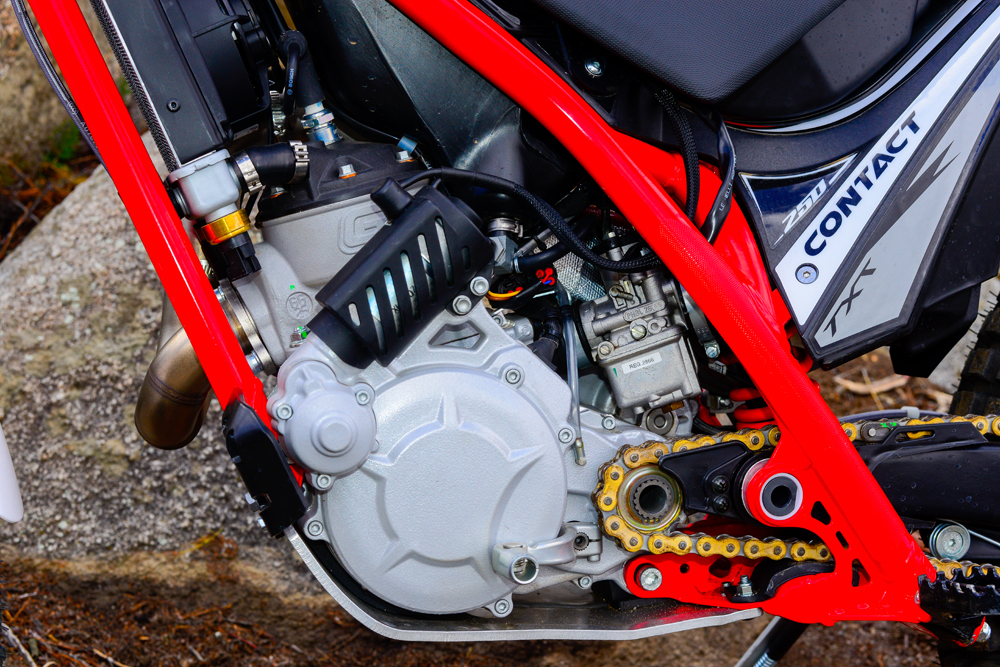 The larger-displacement Contact will appeal more to the experienced rider.
The larger-displacement Contact will appeal more to the experienced rider.
In the engine department, it feels soft on the bottom end, but makes up for it on top. The lack of low-end power can actually be a positive thing for the learning trials rider, because it forces you to refine your technique and learn to manipulate the power delivery with the clutch.
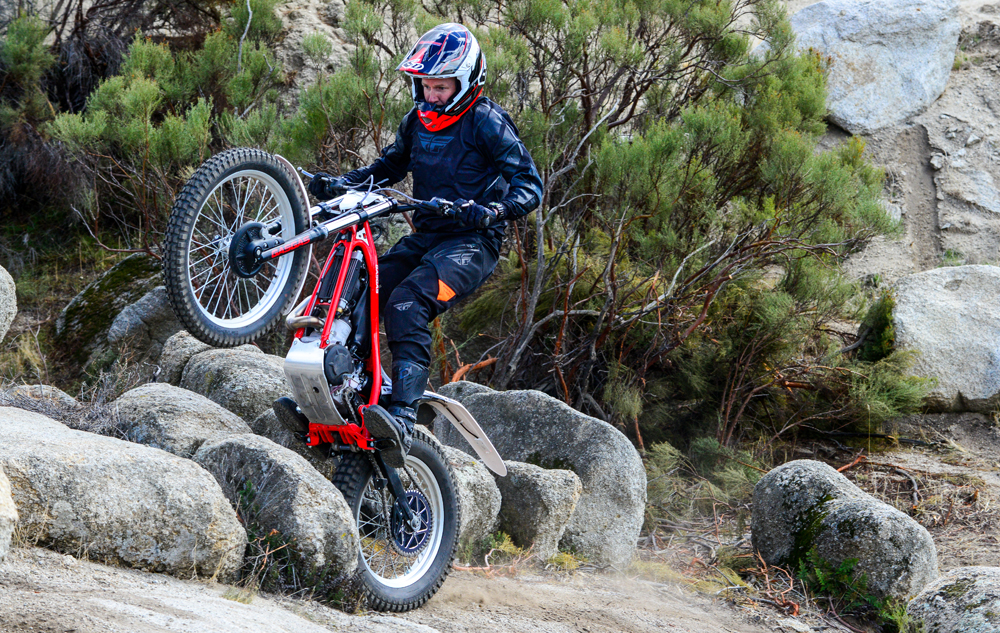 The 125 School might lack bottom-end power, but that forces the rider to focus in on technique, making it a great bike to learn on.
The 125 School might lack bottom-end power, but that forces the rider to focus in on technique, making it a great bike to learn on.
For any rider that’s looking to get into trials, or even a seasoned rider that wants to get on a new bike without breaking the bank, the TXT School 125 is a great option.
GasGas Contact ES 250 ($6399)
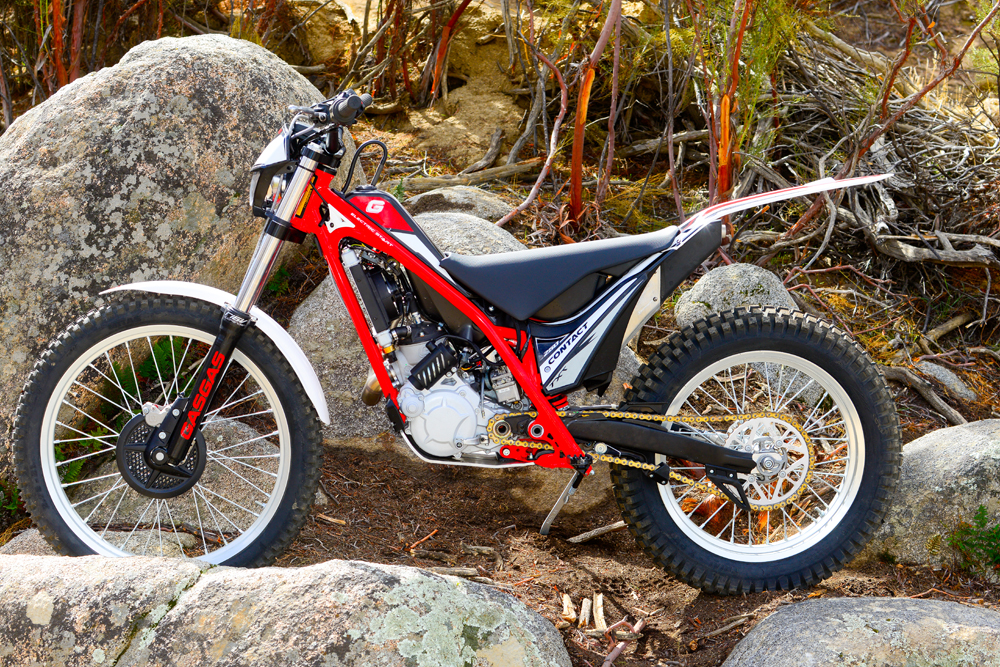 The Contact 250 comes with a removable seat.
The Contact 250 comes with a removable seat.
Like the TXT School 125, the Contact ES 250 features a liquid-cooled two-stroke engine with a six-speed transmission, but it gets electric starting (hence the “ES” in its name) and more displacement at 247.7cc. GasGas also offers a slightly larger-displacement Contact ES 280 with 272.2cc. The Contact ES 250 also gets an actual seat that is easily removable and a slightly larger fuel tank that holds 0.9 gallons, as apposed to the 0.63-gallon tanks on the other bikes. Going by GasGas’ figures, the Contact ES 250 weighs the same as the 125 at 153 pounds.
We really like the idea of a trials motorcycle as an entry-level trail bike. They’re lightweight, easy to ride, and less intimidating than a regular dirt bike, and they are fantastic trainers while being incredibly fun to ride.
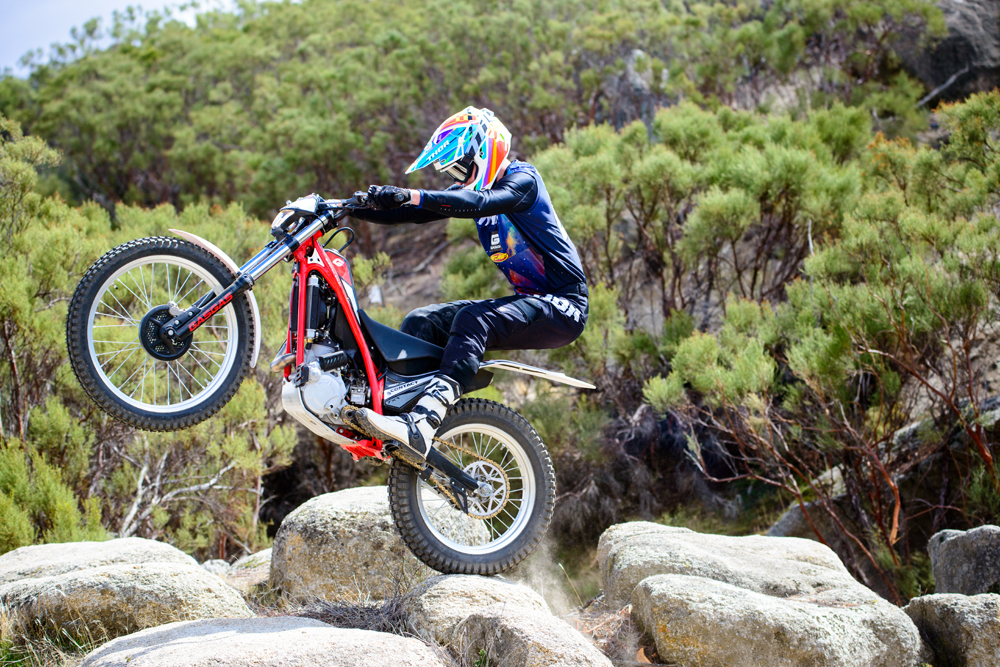 The hybrid Contact is designed for trials and trail riding with more emphasis on trials.
The hybrid Contact is designed for trials and trail riding with more emphasis on trials.
The only issues on a standard trials bike are the lack of a seat and insufficient gas storage. GasGas, as well as other trials bike manufacturers, has addressed this potential market with their Contact bike, as it gets a removable seat and more fuel capacity.
As a hybrid trials/trail bike, the Contact is very capable in both categories, but it is certainly catered towards the trials end of the spectrum as opposed to bikes like the KTM Freeride or Beta X-trainer that lean more toward trail riding.
 The larger-displacement Contact will appeal more to the experienced rider.
The larger-displacement Contact will appeal more to the experienced rider.
The Contact’s mellow power delivery and soft suspension allow for a comfortable ride at slow speeds, however, these characteristics are not ideal for a more aggressive rider.
The Contact maintains the same geometry and handling characteristics as GasGas’ other trials bikes, which are spot-on for trials application, but not always optimal for trail use. Like a traditional trials bike, the seat is still very low relative to the footpeg and handlebar position. The benefit of the ultra-low seat height is that it allows for plenty of room for rider mobility in technical situations and inspires confidence with the low stand-over height. But on the other hand, it also makes seated trail riding a little awkward. When it gets down to it, the Contact’s seat really isn’t meant to be sat on while riding, but is nonetheless very useful between sections—it gives you a nice, soft place to sit and rest while you’re not maneuvering over rocks and things. And a slick carbon fiber exhaust heat shield prevents scaring if you happen to rest your leg on the lava-hot exhaust pipe.
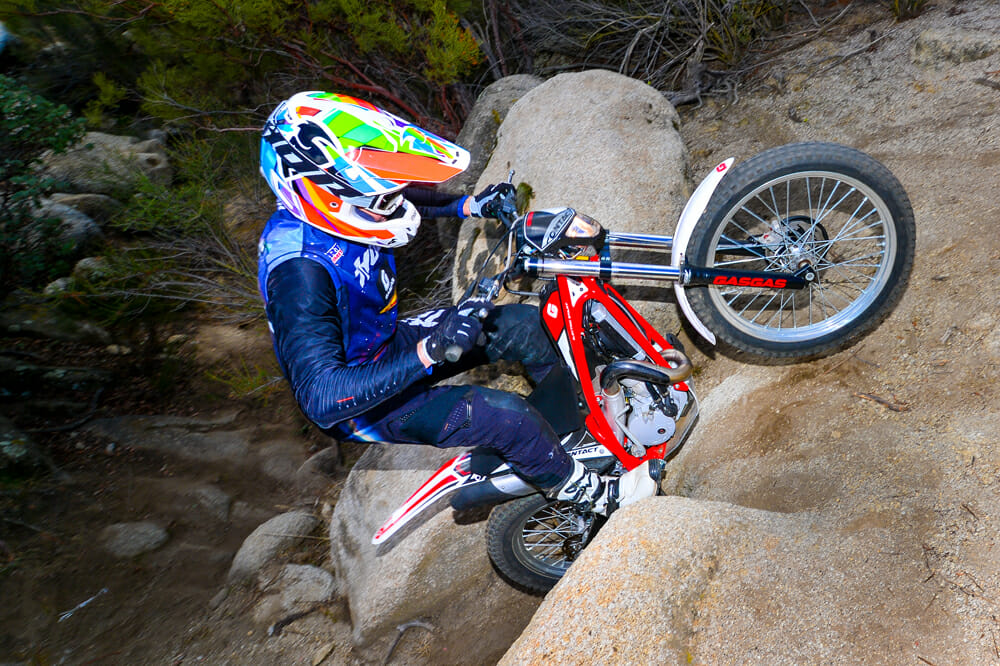
But the most appealing thing about the Contact is its electric starting. It makes a huge difference for the better. Trials bikes with their heavy flywheels need a lot of muscle to start manually, but the Contact’s magic button changes all that. This is a gigantic plus. It’s powered by an easily removable lithium battery. There is, however, still a manual back-up kick lever just in case the battery poops out on you.
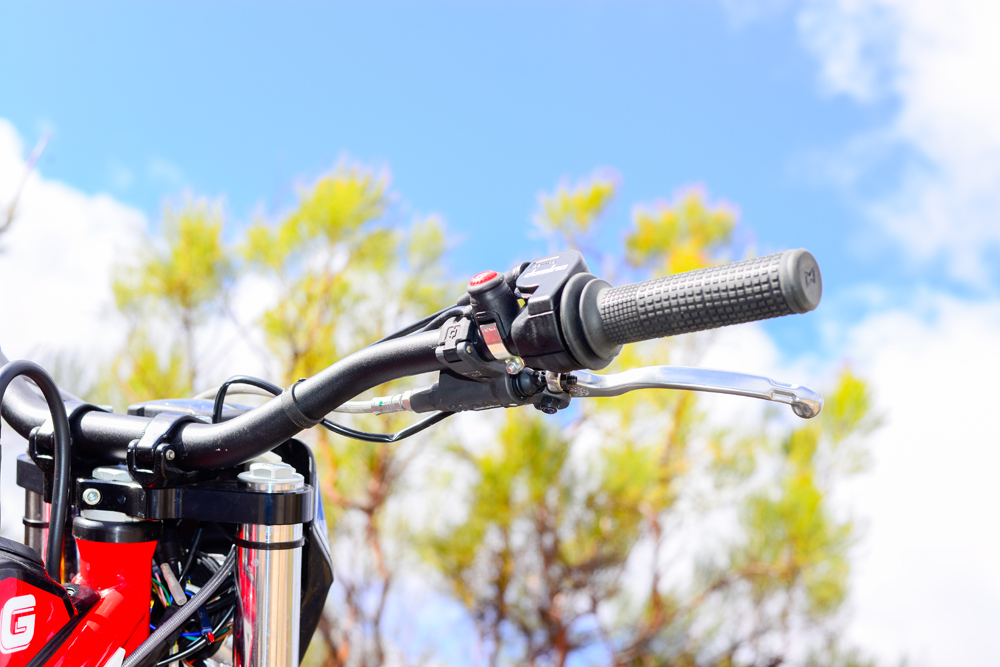 Here is the big selling point for the Contact—the magic button. Electric starting is a huge bonus.
Here is the big selling point for the Contact—the magic button. Electric starting is a huge bonus.
For the intended market of an entry-level trials or trail rider, the ability to take longer rides is a great option when it comes to the Contact, or when the best trials spot is far from camp. However, if you are looking to do more advanced trials or trail riding, a singularly focused bike would probably be a better option. Still, if you’re looking to have pure fun, this would be a great motorcycle to have in your two-wheel arsenal no matter your skill level.
GasGas TXT GP 300 ($8999)
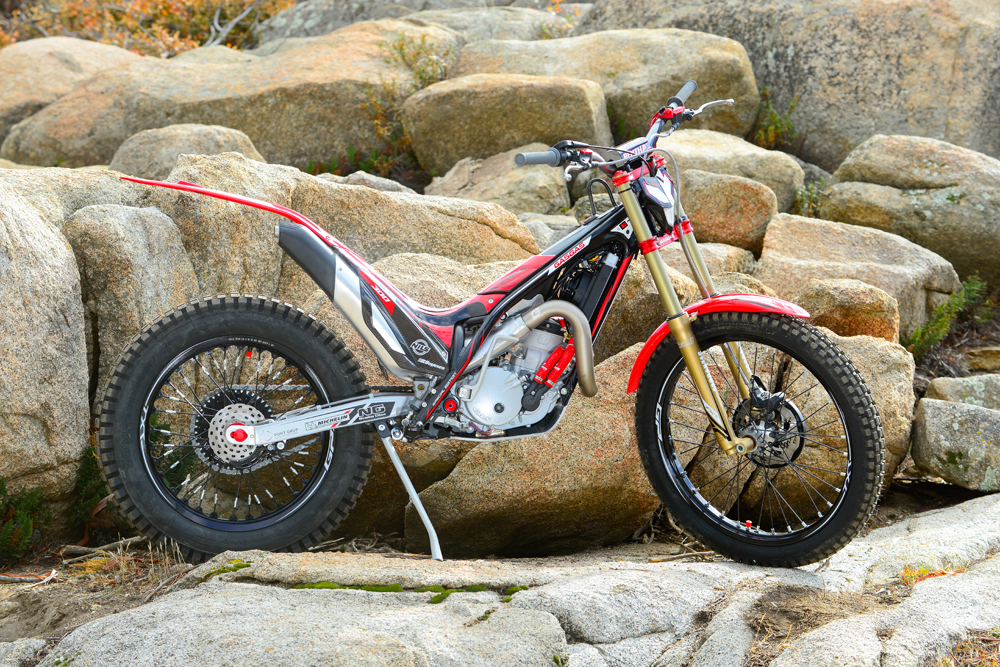 Here it is in all its glory—GasGas’ top-of-the-line TXT GP 300.
Here it is in all its glory—GasGas’ top-of-the-line TXT GP 300.
The TXT GP 300 is GasGas’ premier trialer. It’s a limited-edition model and is fitted with all of the latest technology in trials, slightly more so than the standard spec GasGas TXT Racing 300. No expense was spared with the GP.
Here are some of the more important things that the GP has that the standard doesn’t: an updated Ohlins rear shock with improved adjustability, a revised cylinder head, Boyesen carbon fiber intake reeds, silicone radiator hoses, billet triple clamps that are lighter, latest-spec TECH forks, a titanium header pipe, gold-color suspension highlights, and a carbon fiber airbox with more volume.
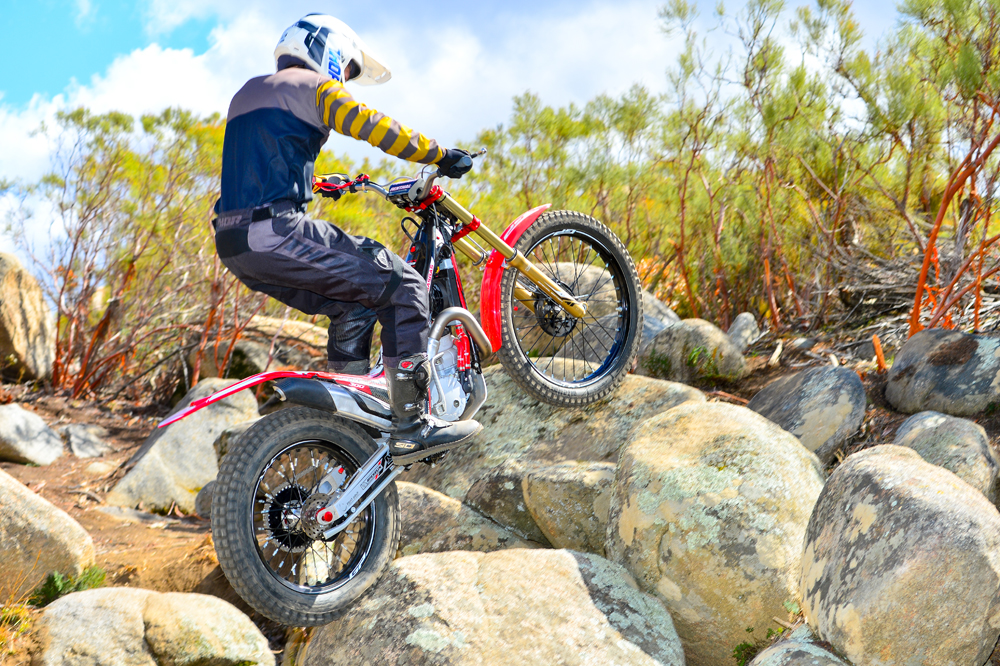 Most trials riders will reach their limit way before the TXT GP 300 does.
Most trials riders will reach their limit way before the TXT GP 300 does.
The GP also features dual spark plugs, FIM regulation Braktec disc brakes, Renthal handlebars and adjustable preload clutch springs. And it weighs just 148 pounds! This bike is competition-ready right out of the crate; even Geoff Aaron has made only a few small changes to his personal TXT GP 300.
The GP’s liquid-cooled 294.1cc two-stroke engine shows no signs of weakness, said our expert trials tester. “It makes incredible low-end power without making any sacrifices on the top-end,” he said. While this is a great attribute for more advanced riders, he added: “I imagine it might be a handful for a beginner rider and potentially instill poor technique.”
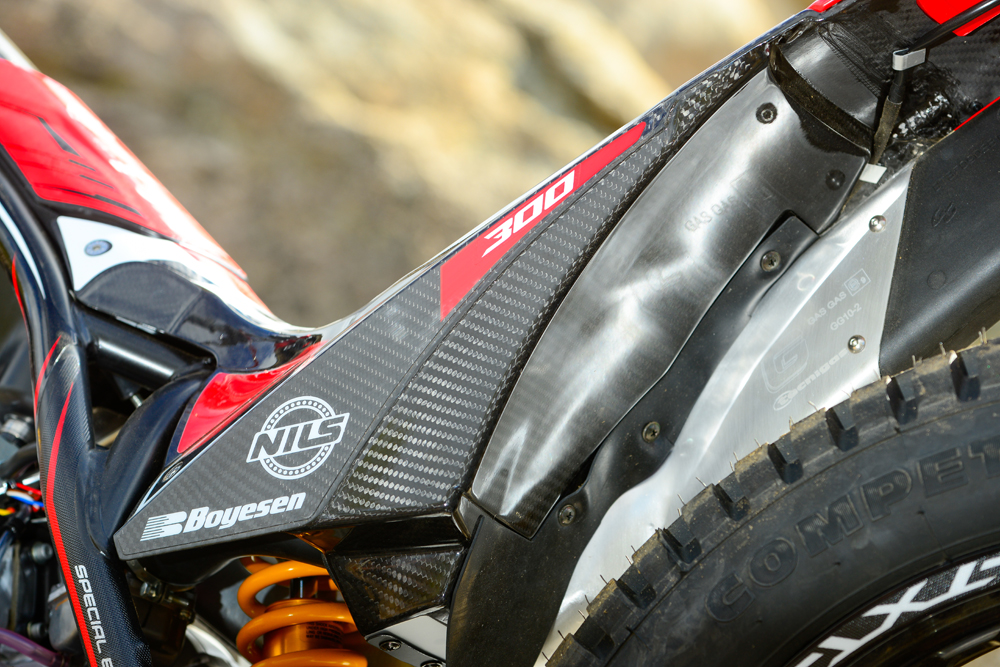 The TXT GP 300 is fitted with a carbon fiber airbox that has more volume than the standard TXT Racing 300.
The TXT GP 300 is fitted with a carbon fiber airbox that has more volume than the standard TXT Racing 300.
We love the Ohlins rear shock, it performs well, and, while we didn’t have a chance to fiddle with the clickers (though we didn’t feel the immediate need to do so), it is very adjustable relative to other trials shocks. The TECH fork is, like the shock, very plush, but still provides strong lower-stroke support for bigger impacts. Of all the bells and whistles on the TXT GP 300, we would say that the suspension is the most beneficial.
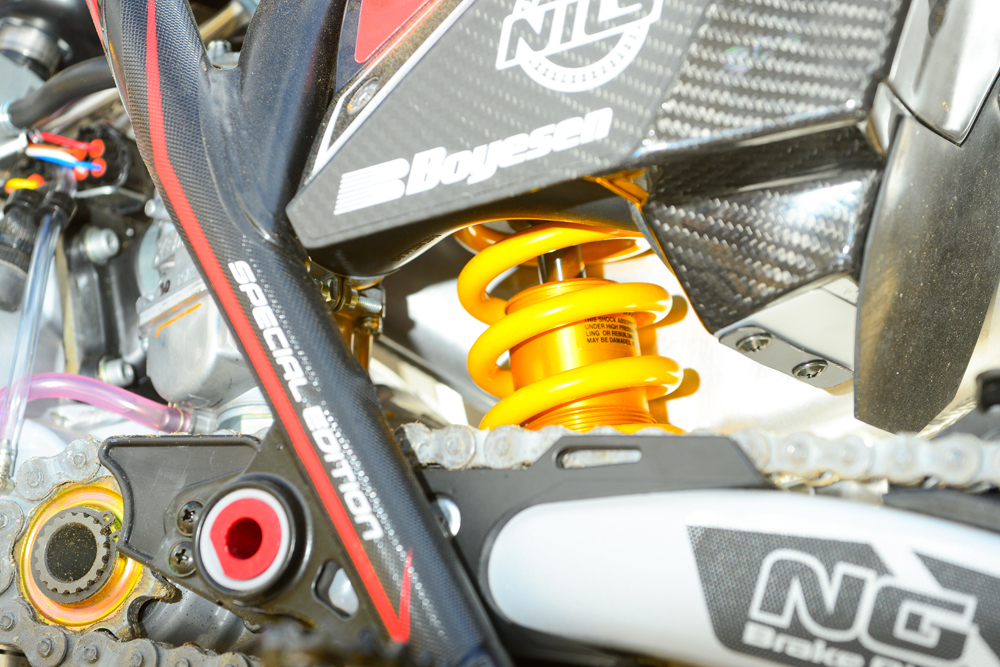 Another nugget that the GP has that the Racing model doesn’t is an upgraded Ohlins shock with full adjustability.
Another nugget that the GP has that the Racing model doesn’t is an upgraded Ohlins shock with full adjustability.
While we didn’t notice a huge performance advantage from the larger carbon fiber airbox, we do think all of the carbon fiber components and plastic guards found on the bike are excellent features that make it feel more like a complete, race-ready package.
We were a little disappointed, however, that the bike didn’t come with better footpegs. The stock pegs are small and have fairly dull teeth that lack grip and provide a small overall platform compared to aftermarket pegs. Even Aaron changed his.
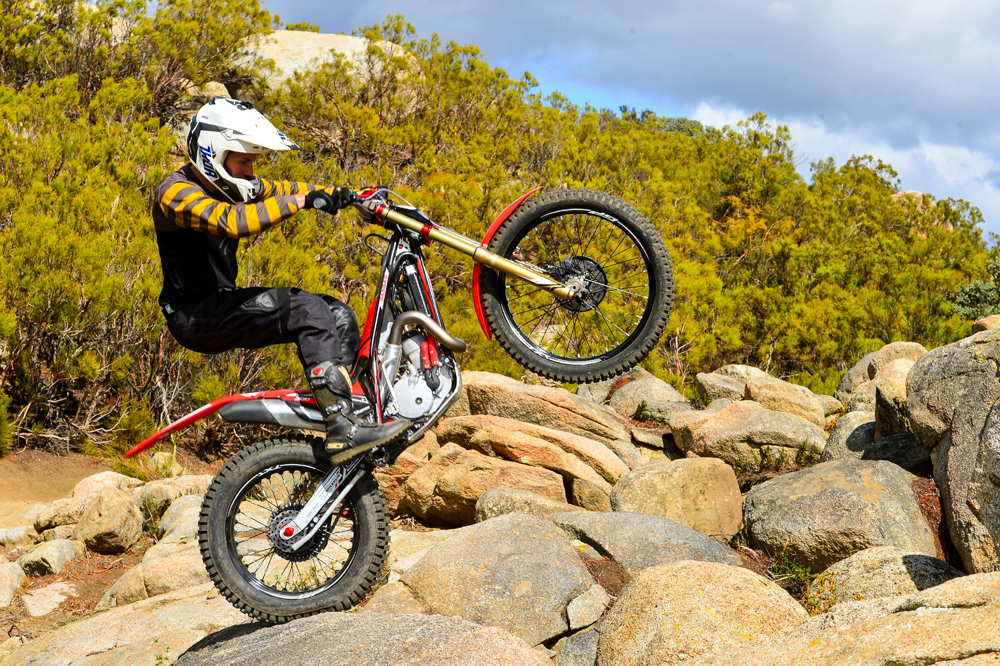 Even though it has big displacement, the GP 300 has super-smooth power delivery, an absolute must when it comes to hard-core trials riding.
Even though it has big displacement, the GP 300 has super-smooth power delivery, an absolute must when it comes to hard-core trials riding.
In the big picture, we’re not sure that the increase in performance is worth the additional cost of the TXT 300 GP over the Contact 250 or other less-expensive models in GasGas’ line for the entry-level or average-skilled rider. However, if you are a hard-core trials rider, which this bike is made for, the GP is well worth the extra bucks. CN
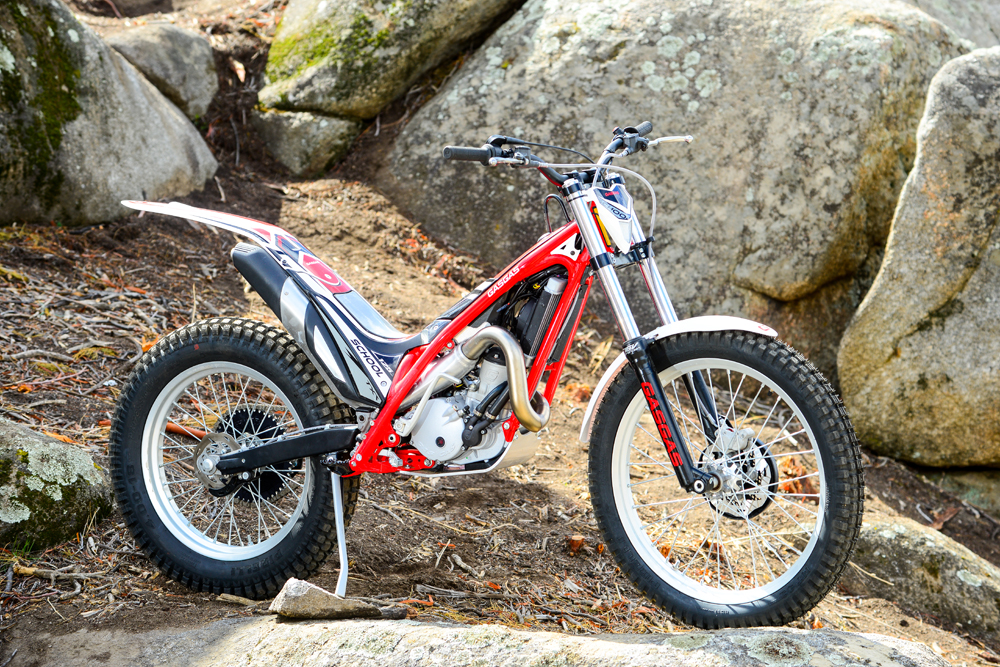 2018 TXT School 125
2018 TXT School 125
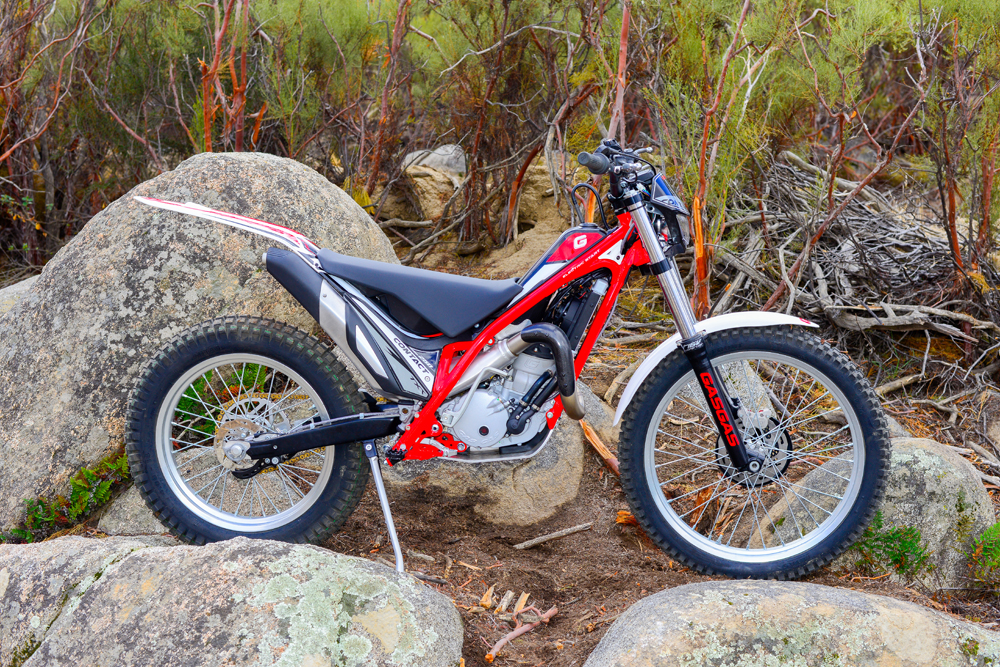 2018 GasGas TXT Contact ES 250
2018 GasGas TXT Contact ES 250
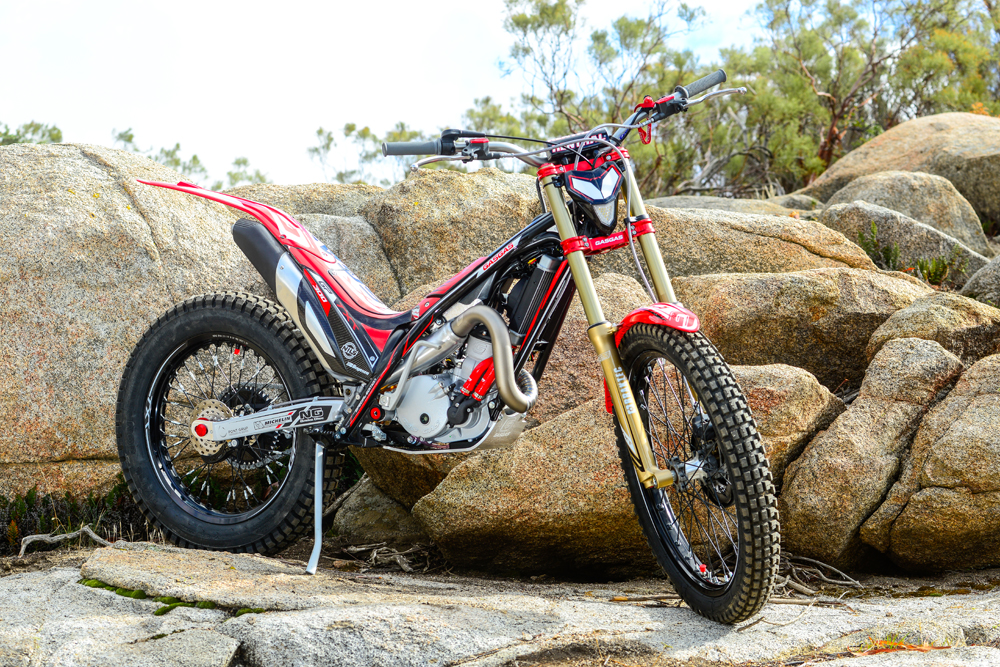 2018 GasGas TXT GP 300
2018 GasGas TXT GP 300
| SPECIFICATIONS |
2018 TXT School 125 ($5999) |
TXT Contact ES 250 ($6399) |
TXT GP 300 ($8999) |
| ENGINE: |
Liquid-cooled, 2-stroke, single |
Liquid-cooled, 2-stroke, single |
Liquid-cooled, 2-stroke, single |
| DISPLACEMENT: |
124.8cc |
247.7cc |
294.1cc |
| BORE X STROKE: |
54×54.5mm |
72.5x60mm |
79x60mm |
| CARBURETION: |
Keihin PWK 28 |
Dell’Orto PH8L 26 |
Keihin PWK 28 |
| CLUTCH: |
Hydraulic |
Hydraulic |
Hydraulic |
| STARTING SYSTEM: |
Kick |
Electric/kick |
Kick |
| TRANSMISSION: |
6-speed |
6-speed |
6-speed |
| FRAME: |
Chome-Molybdenum tubular steel |
Chome-Molybdenum tubular steel |
Chome-Molybdenum tubular steel |
| SWINGARM: |
Aluminum, Progressive linkage system |
Aluminum, Progressive linkage system |
Aluminum, Progressive linkage system |
| FRONT SUSPENSION: |
40mm Olle, inverted fork, non-adj. |
40mm Olle, inverted fork, non-adj. |
TECH, 39mm inverted fork, fully adj. |
| REAR SUSPENSION: |
Olle, single shock, preload adj. |
Olle, single shock, preload adj. |
Ohlins, single shock, linkage, rebound/spring preload adj. |
| FRONT WHEEL TRAVEL: |
6.7 in. |
6.5 in. |
7.1 in. |
| REAR WHEEL TRAVEL: |
6.5 in. |
6.5 in. |
6.9 in. |
| FRONT WHEEL: |
1.6×21 in. |
1.6×21 in. |
1.6×21 in. |
| REAR WHEEL: |
2.15×18 in. |
2.15×18 in. |
2.15×18 in. |
| FRONT TIRE: |
Mitas Trial 2.75×21 in. |
Mitas Trial 2.75×21 in. |
Michelin Trial X11 2.75×21 in. |
| REAR TIRE: |
Mitas Trial 4.00×18 in. |
Mitas Trial 4.00×18 in. |
Michelin Trial X11 4.00×18 in. |
| FRONT BRAKE: |
185mm floating wave disc, 4-piston Braktec caliper |
185mm floating wave disc, 4-piston Braktec caliper |
185mm floating wave disc, 4-piston Braktec caliper |
| REAR BRAKE: |
150mm wave disc, 2-piston Braktec caliper |
150mm wave disc, 2-piston Braktec caliper |
150mm wave disc, 2-piston Braktec caliper |
| FUEL CAPACITY: |
0.63 gal. |
0.92 gal. |
0.63 gal |
| CLAIMED DRY WEIGHT: |
153.2 lbs. |
153.2 lbs. |
147.7 lbs. |
| WHEELBASE: |
52.0 in. |
52.0 in. |
52.0 in. |
| SEAT HEIGHT: |
24.8 in. |
24.8 in. |
24.8 in. |